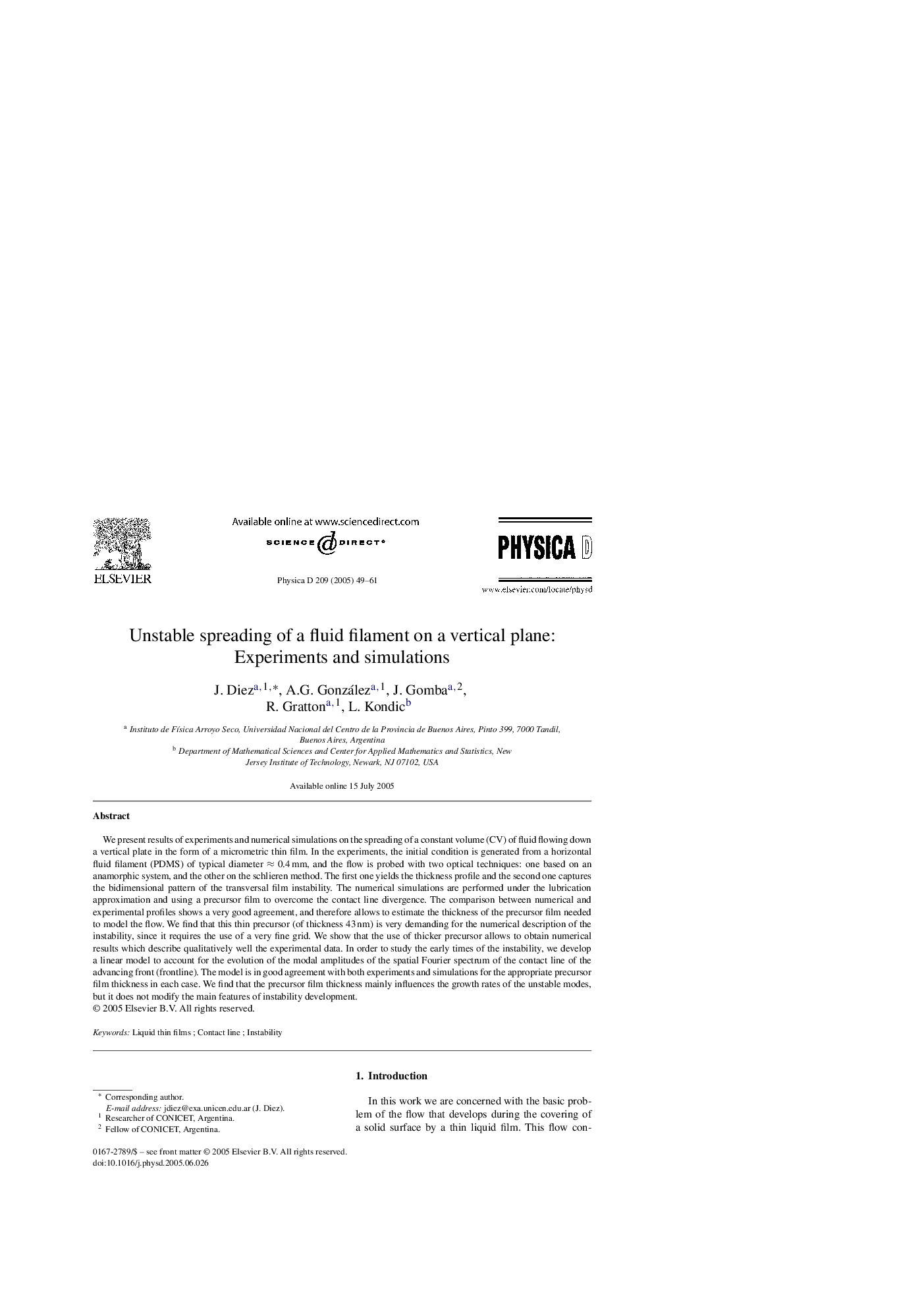| Article ID | Journal | Published Year | Pages | File Type |
|---|---|---|---|---|
| 9877555 | Physica D: Nonlinear Phenomena | 2005 | 13 Pages |
Abstract
We present results of experiments and numerical simulations on the spreading of a constant volume (CV) of fluid flowing down a vertical plate in the form of a micrometric thin film. In the experiments, the initial condition is generated from a horizontal fluid filament (PDMS) of typical diameter â 0.4âmm, and the flow is probed with two optical techniques: one based on an anamorphic system, and the other on the schlieren method. The first one yields the thickness profile and the second one captures the bidimensional pattern of the transversal film instability. The numerical simulations are performed under the lubrication approximation and using a precursor film to overcome the contact line divergence. The comparison between numerical and experimental profiles shows a very good agreement, and therefore allows to estimate the thickness of the precursor film needed to model the flow. We find that this thin precursor (of thickness 43ânm) is very demanding for the numerical description of the instability, since it requires the use of a very fine grid. We show that the use of thicker precursor allows to obtain numerical results which describe qualitatively well the experimental data. In order to study the early times of the instability, we develop a linear model to account for the evolution of the modal amplitudes of the spatial Fourier spectrum of the contact line of the advancing front (frontline). The model is in good agreement with both experiments and simulations for the appropriate precursor film thickness in each case. We find that the precursor film thickness mainly influences the growth rates of the unstable modes, but it does not modify the main features of instability development.
Related Topics
Physical Sciences and Engineering
Mathematics
Applied Mathematics
Authors
J. Diez, A.G. González, J. Gomba, R. Gratton, L. Kondic,
